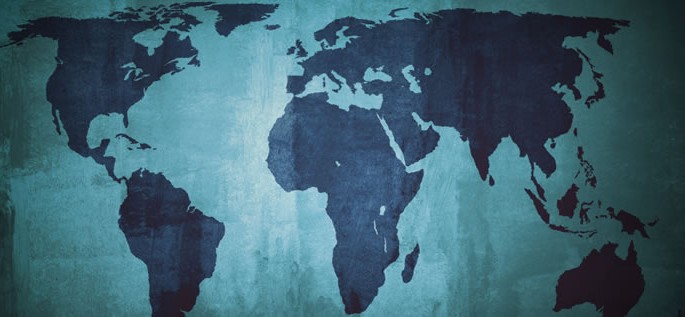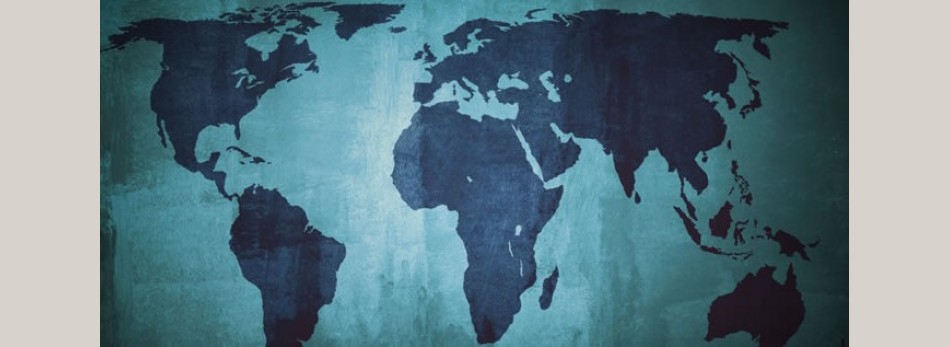Language Families

Most languages belong to language families. A language family is a group of related languages that developed from a common historic ancestor, referred to as protolanguage (proto– means ‘early’ in Greek). The ancestral language is usually not known directly, but it is possible to discover many of its features by applying the comparative method that can demonstrate the family status of many languages. Sometimes a protolanguage can be identified with a historically known language. Thus, provincial dialects of Vulgar Latin are known to have given rise to the modern Romance languages, so the *Proto-Romance language is more or less identical to Latin. Similarly, Old Norse was the ancestor of Norwegian, Swedish, Danish and Icelandic. Sanskrit was the protolanguage of many of the languages of the Indian subcontinent, such as Bengali, Hindi, Marathi, and Urdu. Further back in time, all these ancestral languages descended, in turn, from one common ancestor. We call this ancestor *Proto-Indo-European (PIE). Language families can be subdivided into smaller units called branches. For instance, the Indo-European family has several branches, among them, Germanic, Romance, and Slavic.
Sometimes it is relatively easy to establish relationships among languages. Let us look at the Romance languages. We know that Italian is a descendant of Latin, a language that was spoken in Italy two thousand years ago, and one which left a great number of written documents. The Roman conquest helped spread Latin throughout Europe where it eventually developed into regional dialects. When the Roman Empire broke up, these regional dialects evolved into the modern Romance languages that we know today: French, Italian, Portuguese, Spanish, and others. These languages form the Romance branch of the Indo-European language family. By looking at the word for ‘water’ in three Romance languages, one can easily see the similarities among them.
| Italian | acqua |
| Spanish | agua |
| Portuguese | agua |
The case with Romance languages is unusually easy because their common ancestor — Latin — left many written documents. In most cases, however, the ancestral language was not written. As a result, linguists look at similarities among its modern descendants to establish common origins. Take a look at these examples:
|
English
|
water |
|
German
|
wasser |
|
Danish
|
vand |
|
Russian
|
voda |
|
Polish
|
woda |
|
Czech
|
voda |
It is clear that the word for ‘water’ looks very similar within each group, but not quite as similar across groups. Languages in the first group belong to the Germanic branch of the Indo-European language family. Languages in the second group belong to the Slavic branch. Although there are no written records of the ancestral *Proto-Germanic or *Proto-Slavic languages, we have to assume that these two ancestral languages must have existed at some time, just like Latin did.
Here is the word for ‘water’ in two more languages. Do you think these languages belong to any of the branches above?
| Latvian | udens |
| Albanian | uje |
| Basque | ur |
As it turns out, Latvian belongs to the Baltic branch of the Indo-European language family, Albanian has no close relatives and does not belong to any of the branches of the Indo-European language family, and Basque does not belong to any language family at all. In fact, it is a language isolate, i.e., a language that cannot be reliably assigned to any established language family.
Read “Exploratorium Magazine Lecture on the Evolution of Language“
In many parts of the world, there are no written records, and we don’t know enough about the languages themselves. Consequently, we have to resort to grouping languages on the basis of geography. This is the case with many of the aboriginal languages of Australia, the native Indian languages of the Americas, the tribal languages of Africa, and countless other languages all over the world.
According to Ethnologue (16th edition), there are 147 language families in the world. This figure may not be precise because of our limited knowledge about many of the languages spoken in the most linguistically diverse areas of the world such as Africa. The actual number of families, once these languages are studied and relationships among them are established, will undoubtedly keep changing.
The largest language families (those with over 25 languages) are listed below (Ethnologue). There are 6,523 languages in this group, and together they account for close to 95 percent of all world languages (assuming that there are some 6,900 languages in the world). The remaining families account for only 5 percent of the world languages. In addition, there are 53 languages considered unclassified.
| Language families | Number of languages | Where the languages are spoken |
|---|---|---|
|
Niger-Congo
|
1,532
|
Angola, Benin, Botswana, Burkina Faso, Burundi, Cameroon, Central African Republic, Chad, Comoros, Congo, Cote d’Ivoire, Democratic Republic of the Congo, Equatorial Guinea, Gabon, Gambia, Ghana, Guinea, Guinea-Bissau, Kenya, Lesotho, Liberia, Malawi, Mali, Mozambique, Namibia, Niger, Nigeria, Rwanda, Senegal, Sierra Leone, Somalia, South Africa, Sudan, Swaziland, Tanzania, Togo, Uganda, Zambia, Zimbabwe |
|
Austronesian
|
1,257
|
Brunei, Cambodia, China, Cook Islands, East Timor, Fiji, French Polynesia, Guam, Indonesia, Kiribati, Madagascar, Malaysia, Marshall Islands, Mayotte, Micronesia, Myanmar, Nauru, New Caledonia, New Zealand, Niue, Northern Mariana Islands, Palau, Papua New Guinea, Philippines, Samoa, Solomon Islands, Suriname, Taiwan, Thailand, Tokelau, Tonga, Tuvalu, USA, Vanuatu, Viet Nam, Wallis and Futuna |
|
Trans New Guinea
|
477
|
Australia, East Timor, Indonesia, Papua New Guinea |
|
Sino-Tibetan
|
449
|
Bangladesh, Bhutan, China, India, Kyrgyzstan, Laos, Myanmar, Nepal, Pakistan, Thailand, Viet Nam |
|
Indo-European
|
439
|
Afghanistan, Albania, Armenia, Austria, Azerbaijan, Bangladesh, Belarus, Belgium, Bosnia and Herzegovina, Bulgaria, Canada, China, Croatia, Czech Republic, Denmark, Fiji, Finland, France, Georgia, Germany, Greece, Iceland, India, Iran, Iraq, Ireland, Israel, Italy, Latvia, Lithuania, Luxembourg, Macedonia, Maldives, Nepal, Netherlands, Norway, Oman, Pakistan, Peru, Poland, Portugal, Romania, Russia, Serbia and Montenegro, Slovakia, Slovenia, South Africa, Spain, Sri Lanka, Suriname, Sweden, Switzerland, Tajikistan, Turkey, USA, Ukraine, United Kingdom, Venezuela |
|
Afro-Asiatic
|
374
|
Afghanistan, Algeria, Bahrain, Cameroon, Chad, Cyprus, Egypt, Eritrea, Ethiopia, Georgia, Iran, Iraq, Israel, Jordan, Kenya, Libya, Mali, Malta, Mauritania, Morocco, Niger, Nigeria, Oman, Saudi Arabia, Somalia, Sudan, Syria, Tanzania, Tunisia, Turkey, United Arab Emirates, Uzbekistan, Yemen |
|
Australian
|
264
|
Australian |
|
Nilo-Saharan
|
205
|
Algeria, Benin, Central African Republic, Chad, Democratic Republic of the Congo, Egypt, Eritrea, Ethiopia, Kenya, Mali, Niger, Nigeria, South Sudan, Sudan, Tanzania, Uganda |
|
Oto-Manguean
|
177
|
Mexico |
|
Austro-Asiatic
|
169
|
Algeria, Benin, Burkina Faso, Central African Republic, Chad, Democratic Republic of the Congo, Eritrea, Ethiopia, Kenya, Mali, Niger, Nigeria, Sudan, Tanzania, Uganda |
|
Tai-Kadai
|
92
|
China, India, Laos, Myanmar, Thailand, Viet Nam |
|
Dravidian
|
85
|
India, Nepal, Pakistan |
|
Creole
|
82
|
Antigua and Barbuda, Australia, Bahamas, Barbados, Belize, Brazil, Cameroon, Cape Verde Islands, Central African Republic, Chad, Colombia, Congo, Curacao, Democratic Republic of the Congo, East Timor, Equatorial Guinea, French Guiana, Ghana, Grenada, Guadeloupe, Guinea-Bissau, Guyana, Haiti, India, Indonesia, Jamaica, Macao, Malaysia, Mauritius, Mexico, Micronesia, New Caledonia, Nicaragua, Nigeria, Norfolk Island, Panama, Papua New Guinea, Philippines, Réunion, Saint Lucia, Saint Vincent and the Grenadines, São Tomé e Príncipe, Seychelles, Sierra Leone, Singapore, Solomon Islands, South Africa, South Sudan, Sri Lanka, Suriname, Tanzania, Trinidad and Tobago, Turks and Caicos Islands, U.S. Virgin Islands, Uganda, United States, Vanuatu |
|
Tupian
|
76
|
Bolivia, Brazil, French Guiana, Paraguay, Peru |
|
Language Isolates
|
75
|
Bolivia, Brazil, Canada, Chile, Colombia, Ecuador, India, Indonesia, Japan, Mali, Mexico, Nepal, Nigeria, Pakistan, Papua New Guinea, Peru, Russian Federation, South Korea, Spain, United States, Venezuela |
|
Mayan
|
69
|
Belize, Guatemala, Mexico |
|
Altaic
|
66
|
Afghanistan, Azerbaijan, China, Georgia, Iran, Kazakhstan, Kyrgyzstan, Lithuania, Moldova, Mongolia, Russia, Turkey, Turkmenistan, Uzbekistan |
|
Uto-Aztecan
|
61
|
El Salvador, Mexico, United States |
|
Arawakan
|
59
|
Bahamas, Bolivia, Brazil, Colombia, Guyana, Honduras, Peru, Suriname, Venezuela |
|
Torricelli
|
56
|
Papua New Guinea |
|
Sepik
|
55
|
Papua New Guinea |
|
Quechuan*
|
46
|
Argentina, Bolivia, Chile, Colombia, Ecuador, Peru |
|
Na-Dene
|
46
|
Canada, United States |
|
Algic
|
44
|
Canada, United States |
|
Hmong-Mien
|
38
|
China, Laos, Vietnam |
|
Uralic
|
37
|
Estonia, Finland, Hungary, Latvia, Norway, Russia, Sweden |
|
North Caucasian
|
34
|
Azerbaijan, Georgia, Russian Federation |
|
Penutian
|
33
|
Canada, United States |
|
Macro-Ge
|
32
|
Bolivia, Brazil |
|
Ramu-Lower Sepik
|
32
|
Papua New Guinea |
|
Carib
|
31
|
Brazil, Colombia, Guyana, Suriname, Venezuela |
|
Panoan
|
28
|
Bolivia, Brazil, Peru |
|
Khoisan
|
27
|
Angola, Botswana, Namibia, South Africa, Tanzania |
|
Salishan
|
26
|
Canada, United States |
|
Tucanoan
|
25
|
Brazil, Colombia, Ecuador |
*Quechua is also classified as a macrolanguage, i.e., a family of varieties of a single language that are not distinct enough to be considered separate languages.







